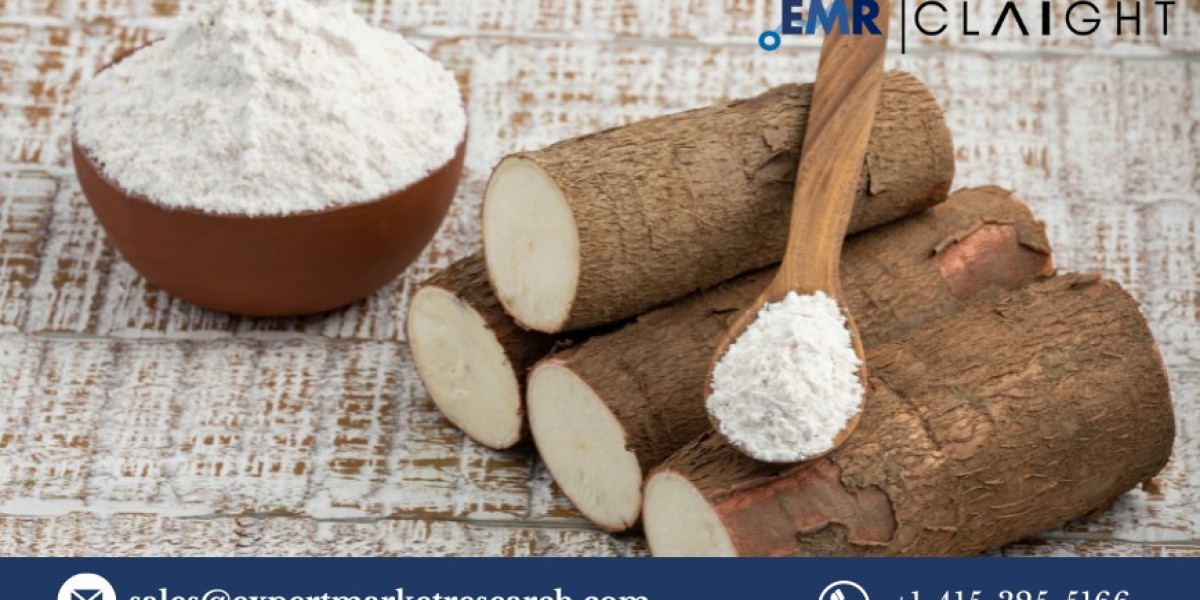The global native starch market is poised for steady growth, with projections indicating a compound annual growth rate (CAGR) of 4.3% between 2024 and 2032. Native starch, a carbohydrate polymer derived from plant-based feedstock such as maize, cassava, wheat, and potato, plays an integral role across several industries, including food and beverages, pharmaceuticals, textiles, paper, and personal care. Accounting for over 35% of global starch production, native starch is a crucial component in a variety of sectors, and its versatility drives consistent demand.
Market Overview
Native starch production remains highly dependent on agricultural feedstock, with maize (corn) serving as the dominant source. In fact, maize consists of around 72% starch, making it an essential crop for starch production. In 2017, global maize production reached a staggering 1,044.6 million tonnes, with the United States being the leading producer, accounting for more than 35% of total output. Other notable starch-producing feedstock includes wheat, potatoes, and cassava, all of which have varying degrees of significance in different regional markets.
Wheat production reached 745 million tonnes in 2017, primarily driven by the European Union (EU), Russia, China, and Australia. Potatoes, another major source of native starch, saw global production of 389 million tonnes, with China and India leading the charge. Cassava, on the other hand, is primarily grown in Africa, which produced 275 million tonnes in 2017. This crop plays an especially important role in local diets but is also gaining traction in the starch industry due to its cost-effectiveness and utility in various applications.
Leading Markets and Regional Insights
The United States stands as the leading native starch market, leveraging its extensive maize production capabilities. However, significant markets also exist in the Asia-Pacific and Europe regions. In the European Union, the starch industry saw an increase in production from 8.7 million tonnes in 2004 to 11 million tonnes in 2017. Approximately 9.4 million tonnes of starch and starch derivatives are consumed within the EU, with native starch accounting for over a quarter of the total.
North America and Europe have traditionally dominated the global native starch market due to their established agricultural sectors and industrial applications. However, the Asia-Pacific region is quickly catching up, driven by growing populations, increasing disposable incomes, and greater demand for processed foods and industrial applications. In Latin America, the Middle East, and Africa, the native starch market is also expanding due to rising consumption in food and non-food sectors.
Applications of Native Starch
Native starch has broad applicability across various industries, making it a critical commodity for global markets. Its primary uses include:
1. Food and Beverage Industry
Native starch plays a crucial role in the food industry, where it is used as a thickener, stabilizer, moisture controller, and texture enhancer. In addition, it is a vital ingredient in products such as dry mix soups, salad dressings, processed meats, spreads, puddings, and baked goods. As the global demand for convenient, processed, and ready-to-eat food products grows, the native starch market is poised to benefit from this trend.
2. Textile Industry
The textile industry utilizes native starch as a sizing agent, which strengthens yarns during the weaving process. Additionally, native starch serves as a finishing agent and color thickener, enhancing the quality of finished textiles. The growing demand for eco-friendly textiles and sustainable manufacturing processes is expected to fuel native starch use in this industry.
3. Paper Industry
In the paper industry, native starch is used to improve the strength and durability of paper products. As an adhesive and binding agent, it enhances paper quality while maintaining the flexibility and printability of paper sheets. The growing global demand for packaging materials, particularly in e-commerce and consumer goods, is expected to provide a boost to native starch consumption in this sector.
4. Pharmaceuticals
Native starch is widely used in the pharmaceutical industry as a binder and disintegrant in tablet formulations. Its natural and biodegradable properties make it a preferred ingredient for many drug manufacturers looking to create more sustainable and eco-friendly products.
5. Personal Care Products
In the personal care industry, native starch is used in the production of powders, creams, and lotions due to its absorbent and moisturizing properties. Its use in natural and organic personal care products has been growing as consumers seek chemical-free and environmentally sustainable options.
Market Segmentation
The global native starch market can be categorized based on its end-use sectors:
- Food and Beverage Industry: Includes applications in processed foods, sauces, dressings, and baked goods.
- Textile Industry: Utilizes native starch as a sizing and finishing agent for yarn and fabrics.
- Paper Industry: Uses native starch to improve the strength and flexibility of paper products.
- Pharmaceuticals: Involves applications in drug formulations, particularly in tablets.
- Personal Care Products: Includes use in lotions, creams, and powders due to its natural properties.
- Others: Encompasses various other applications such as adhesives, construction materials, and more.
Competitive Landscape and Recent Developments
The native starch market is highly competitive, with key players expanding their production capacities and investing in new technologies to gain an edge in the market. Some of the major companies in the native starch industry include:
- Cargill, Incorporated
- Tate & Lyle PLC
- Ingredion Incorporated
- Tereos Participations
- Roquette Frères S.A.
- Royal Avebe
- AGRANA Beteiligungs AG
These companies have been actively engaging in mergers, acquisitions, and capacity expansions to meet the growing global demand for native starch. For instance, in March 2020, Ingredion expanded its specialty ingredients capacity through the acquisition of Western Polymer, while Cargill announced a USD 22.7 million investment in its Sas Van Gent starch production facility in the Netherlands in February 2020.
Key Market Drivers
The global native starch market is being driven by several key factors:
Rising Demand for Processed and Convenience Foods: As consumer lifestyles become busier and disposable incomes rise, demand for processed and convenient food products has increased. Native starch plays a crucial role in these products as a thickener, stabilizer, and texture enhancer.
Growth in Non-Food Applications: Native starch is increasingly being used in industries such as textiles, paper, adhesives, and bioplastics. Its natural and biodegradable properties make it an attractive alternative to synthetic materials, particularly as consumers and manufacturers seek more environmentally friendly options.
Sustainability and Eco-Friendly Initiatives: With growing environmental concerns, native starch is being used as a key ingredient in the development of organic bioplastics. These bioplastics are used in manufacturing biodegradable disposable plates, cutlery, and packaging materials, further expanding the scope of native starch applications.
Challenges in the Native Starch Market
Despite its growth prospects, the native starch market faces several challenges:
Dependence on Feedstock Production: The native starch market is heavily reliant on the availability and yield of key feedstock crops such as maize, wheat, potato, and cassava. Unfavorable weather conditions, climate change, and fluctuating crop prices can significantly impact the supply chain and market prices of native starch.
Competition from Modified Starch: While native starch is widely used, it faces competition from modified starch, which offers enhanced functionalities such as greater stability, viscosity, and tolerance to extreme processing conditions. The increasing use of modified starch in food and industrial applications may limit the market share of native starch.
The global native starch market is expected to experience steady growth, driven by its wide range of applications in both food and non-food industries. The growing demand for processed foods, sustainable products, and eco-friendly materials presents significant opportunities for the market. However, the industry must navigate challenges such as feedstock dependency and competition from modified starch to maintain its growth trajectory. With key players investing in capacity expansions and innovations, the native starch market is well-positioned to meet the evolving demands of various sectors across the globe.
Read More Reports:
https://www.expertmarketresearch.com/articles/top-soap-manufacturers
https://www.expertmarketresearch.com/articles/top-toys-companies
https://www.expertmarketresearch.com/articles/top-laser-technology-companies







